Why Pogonomyrmex? They are big and handsome and primarily eat seeds, plus they generally suck at climbing (which is becoming important to me as I deal with increasing escape attempts by my larger colonies). As long as I've got seeds for Veromessors and am set up for desert species, why not? I confess I want to eventually have enough workers I can have an actual working Uncle Milton "ant farm" with not just workers, but brood. Maybe by the time in-person school is back I can have a full demonstration Uncle Milton with a real ant colony in it for the kids to observe (though with real dirt, not mystery white stuff [edit: crushed perlite?]).
The one big Pogonomyrmex downside is their painful sting and reputation for some of the queens dying.
Here are my previous #PogoFails:
1. Pogonomyrmex subdentatus queen. I didn't have heat for her until very late, so her brood wasn't growing even at 80F room temp (I've read they need really high temps in the growing season and room temp sends them into diapause over the winter), and when I finally did give her heat and some dirt, the dirt brought her near the window, she got trapped in condensation, and died
2. Pogonomyrmex californicus bicolor colony. I had them in a dirt box. (If you've seen Drew's pics, you know P. calis dig AWAY from the windows in such a way that you can't see into most of their tunnels.) I also added a few springtails because the dirt got so moldy from seeds and food. They appeared to be doing well until I turned off heat to give them a winter break. The springtails began to dominate. The colony moved their brood where I could no longer see it (with the heat on, they had kept the brood at the bottom, where the tunnels were visible, but afterwards it was impossible to find the brood). I stopped seeing workers at the surface. I might have overwatered or underwatered. Basically they went on a steep decline after I turned off the heat, and then they disappeared completely. I was hoping the ants would eat the springtails but it could be the opposite happened (I've heard springtails may eat brood).
3. I did, by the way, have some Uncle Milton workers in an Uncle Milton to show to school kids. The Pogonomyrmex occidentalis workers were big (I seem to remember they were the size of the P. subdentatus queen) and red and beautiful. Of course, though, as they were a winter crop of workers, many were probably quite old and then they rapidly died off. They did make some nice tunnels for the kids to see, though. [Edit: It was actually harder than I thought to watch the big orphaned occi workers dying. At first they were grooming each other in a friendly manner and exploring and all that and that was nice to watch, but as they died they brought more and more corpses out and buried them and soon it was just a couple of them left. I mean I'm sure it's just human projection but it was sad to watch.]
All that said, as much as everyone says Pogonomyrmex do best in dirt, for founding I decided I would try it without dirt. I got some THA test tubes with inserts, but eventually didn't use them. I asked around and heard mixed things about mini-hearths and Pogonomyrmex, but given someone in the THA group HAS had success founding P. calis in mini-hearths, I figure it's possible.
Pogonomyrmex californicus
2020.6.16 - 22
A solitary P. californicus (NOT bicolor) arrived in the mail (another one didn't survive). She was very agitated in the glass tube. I briefly stuck her in a THA insert tube, but she was still so agitated I decided screw it, and put her in a mini-hearth. I put in a small bowl of seeds as well. She ran around and seemed positively relieved to find a way down into what her ant brain must think is "dirt."
Over the next week I see her come up sometimes to run around and check out the seeds. I did add a sugar water feeder, too, and a seedling heating mat. She seems not totally happy with the nest, but I think I see one egg on the water tower.
P. calis apparently do need seeds during founding. The foraging needs are one reason I chose to try a mini-hearth.
Pogonomyrmex subnitidus
2020.6.18 - 22
A group of 4 queens that have been identified as P. subnitidus (ID'ed by Pogoqueen) arrived from Sleepy.
The next day I observed that they were extremely agitated in their test tube. I put them into another mini-hearth with a dish of seeds and a sugar water feeder. The nest area had accidentally gotten soaking wet, but I know it dries quickly.
The four queens were very different.
- One queen immediately found the tube going down into the nest and was slurping up water from the ground. She was so fast I didn't even see her go down. I only figured out she had afterward.
- Another queen shortly after apparently smelled the water vapor coming up from the nest entrance, and also went down into the nest and began slurping water from the ground.
- The third queen stumbled around and eventually sniffed out the ant nectar and pretty much plugged her antennae and face into it and just drank sugar water.
- The fourth queen seemed extremely derpy and ran around helplessly trying to climb up at the corners, bumbling around, going near but never close enough to the nest entrance and the ant nectar dispenser. FINALLY she seemed to stumble accidentally close to the ant nectar and was soon slurping down sugar water with the other ant. I guess there's one derpy queen in every bunch....
Anyway I got some heat for the two Pogonomyrmex mini-hearths (the P. cali and the P. subnitidus) and left them alone for a few days to acclimate and hopefully decide to start laying eggs. Today I checked on them. The subnit four are clustered together and seem to have a very small egg pile.
By the way, I keep thinking about the material on this page:
https://www.asu.edu/...mrex queens.htm
It contains information on building the flat-style ant farm, plus feeding and heating advice (e.g., "Species of Pogonomyrmex do best at warm temperatures, with most species doing best when they are maintained at 30oC or higher.� I generally keep colonies in an incubator at 35oC, but even temperatures up to about 40oC are fine...").
Edited by OhNoNotAgain, July 31 2022 - 1:22 PM.








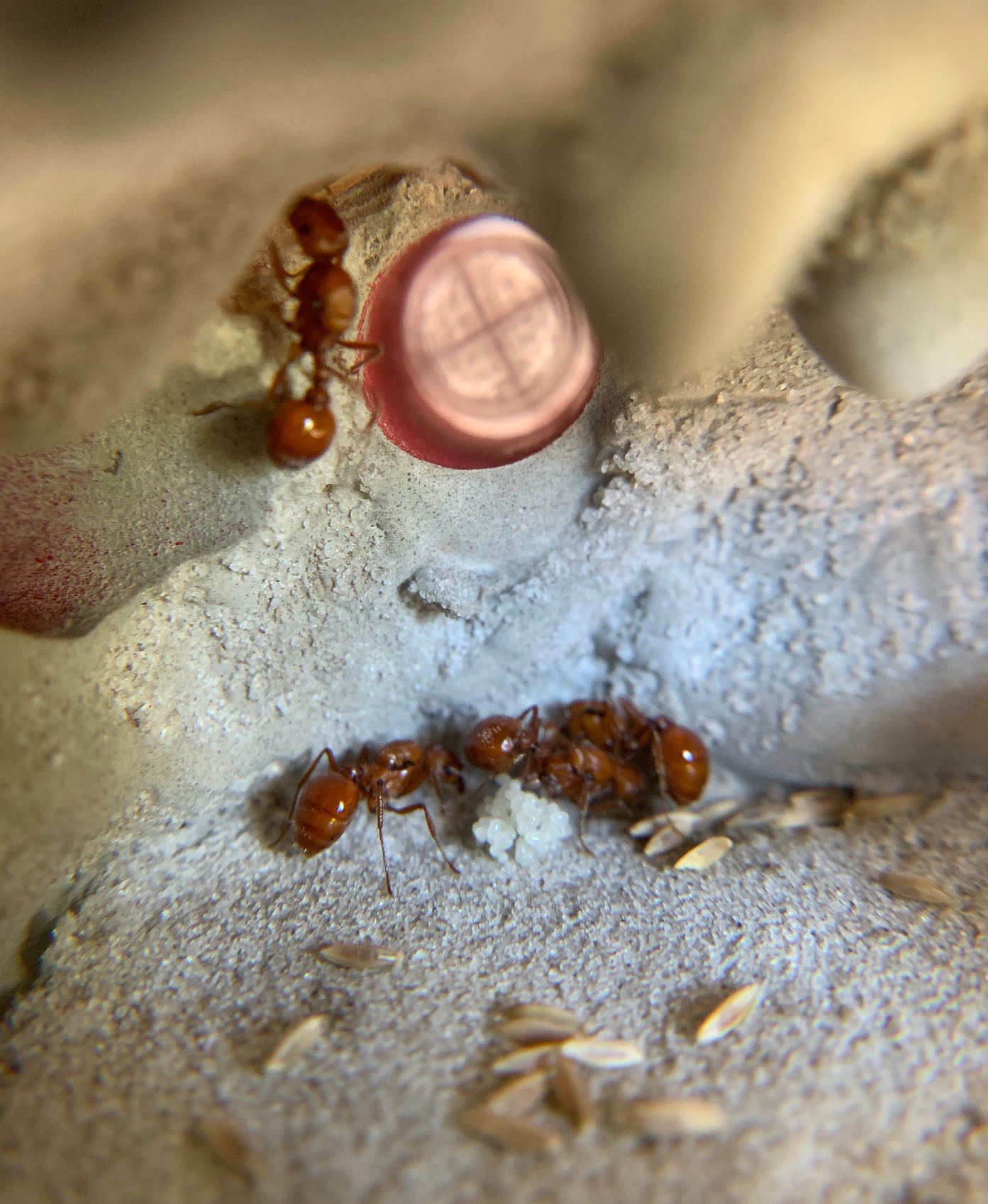
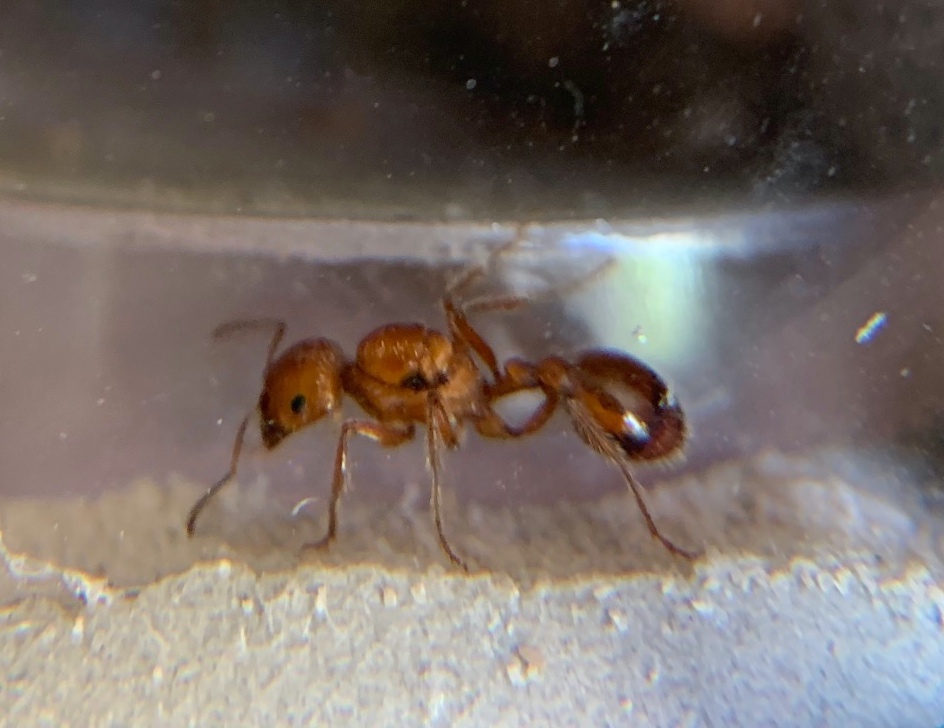

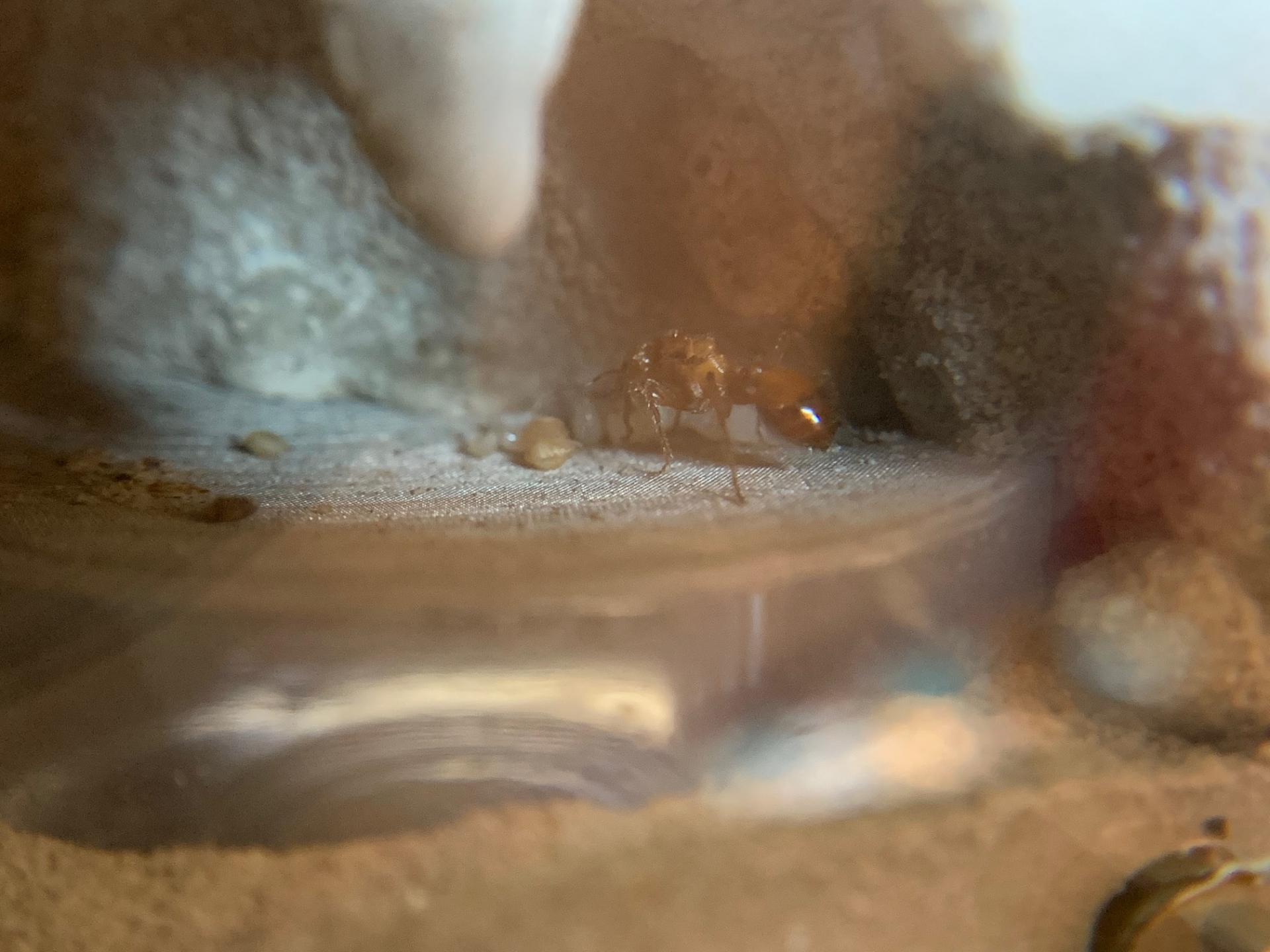
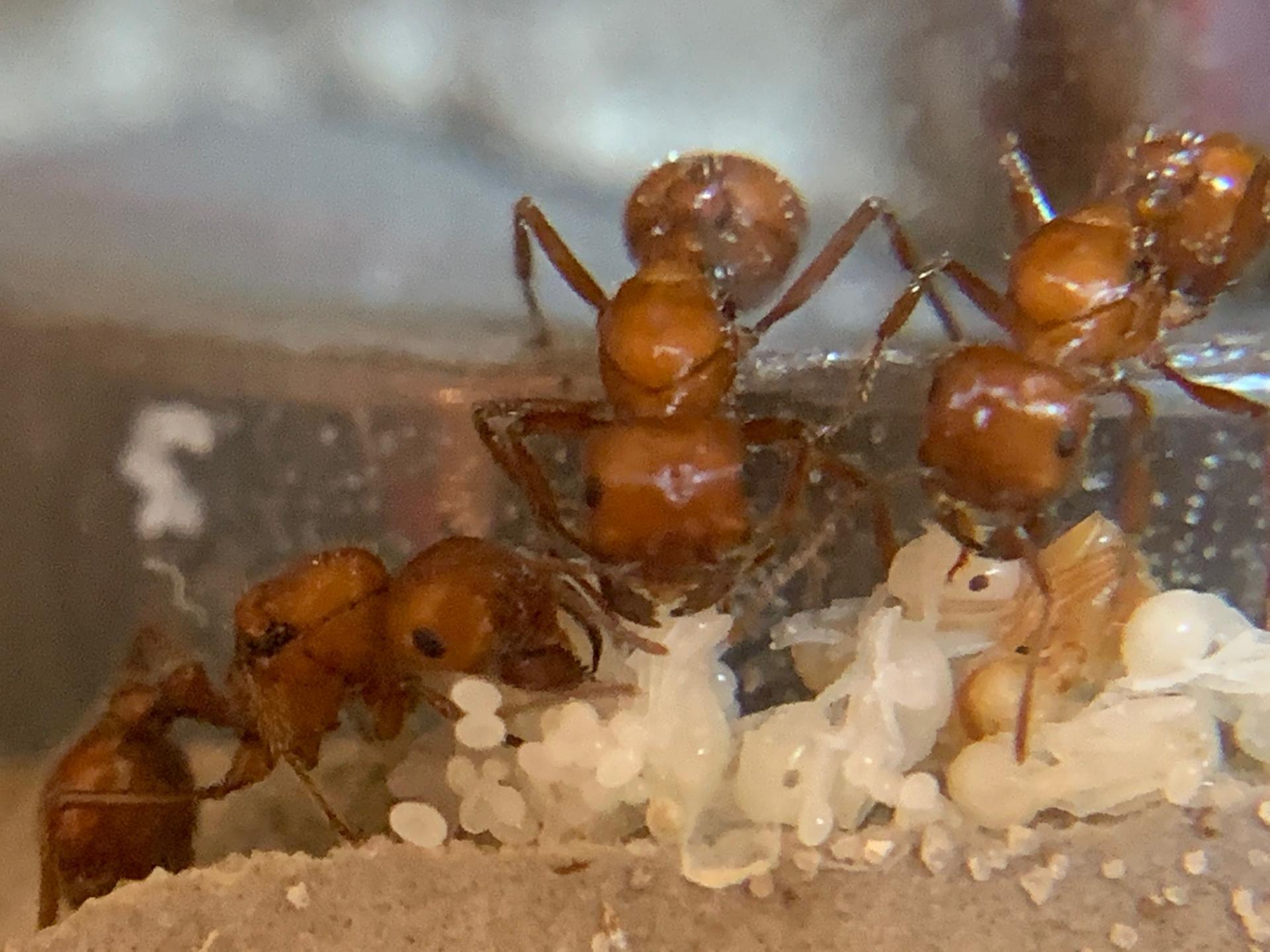



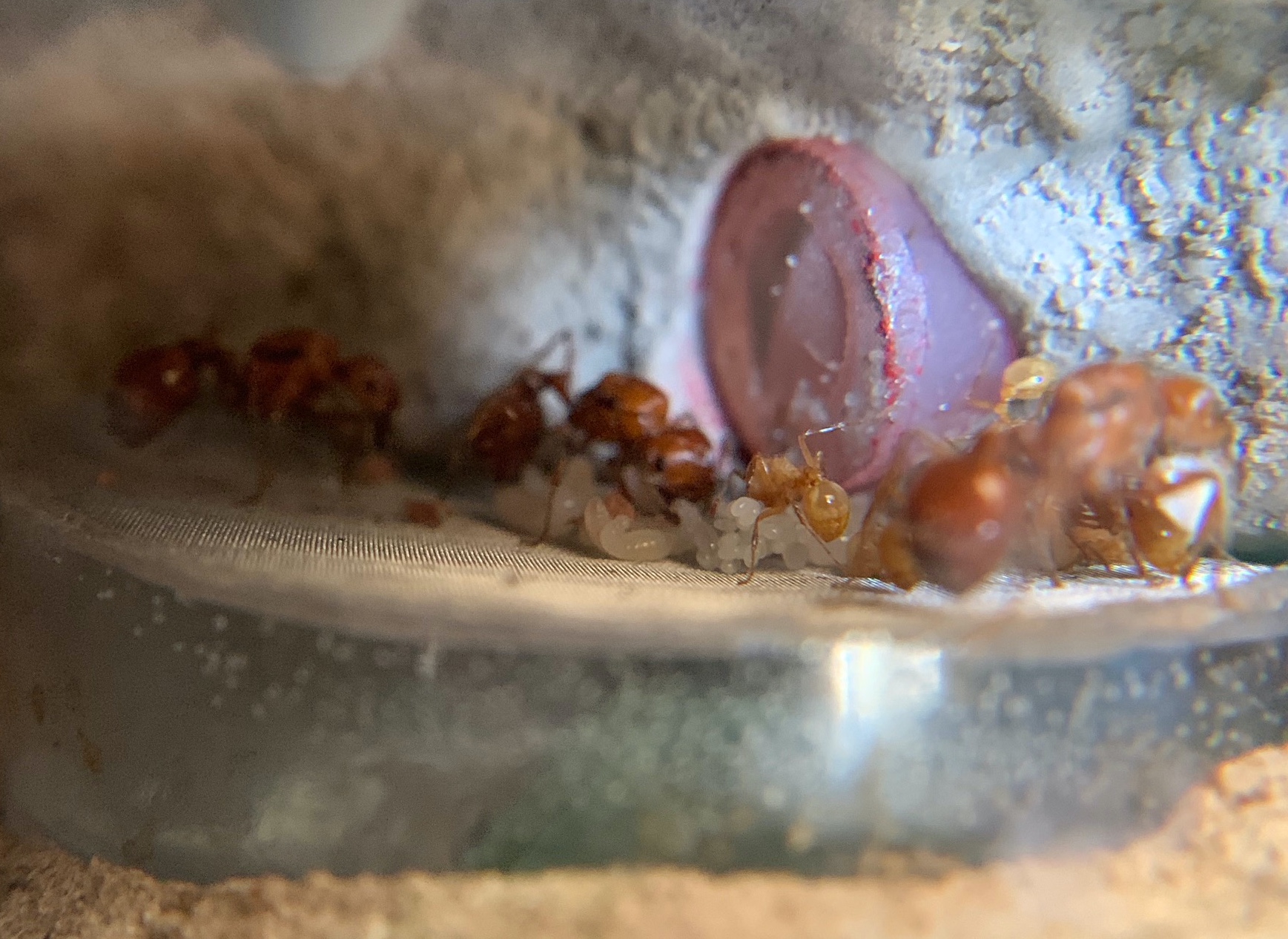
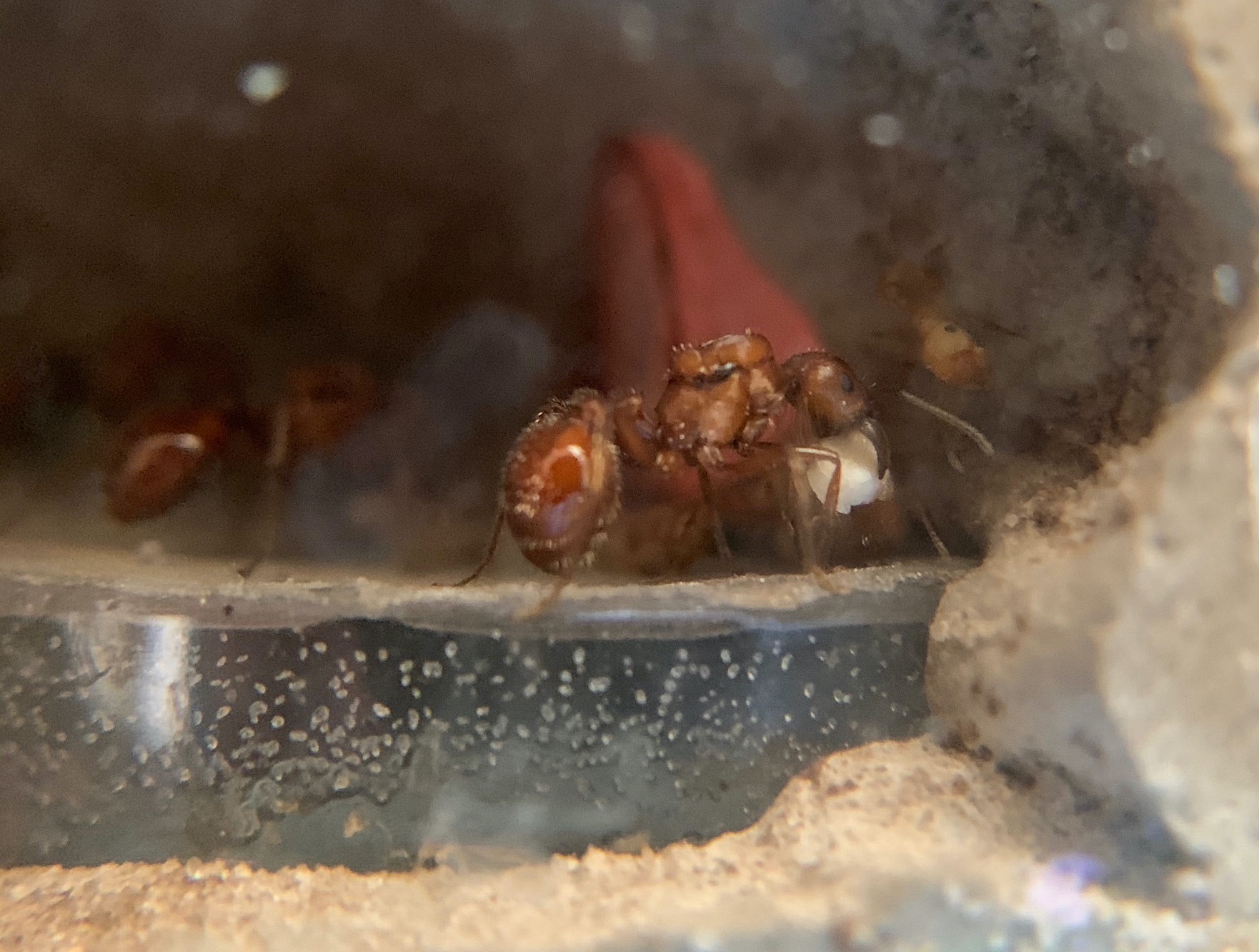
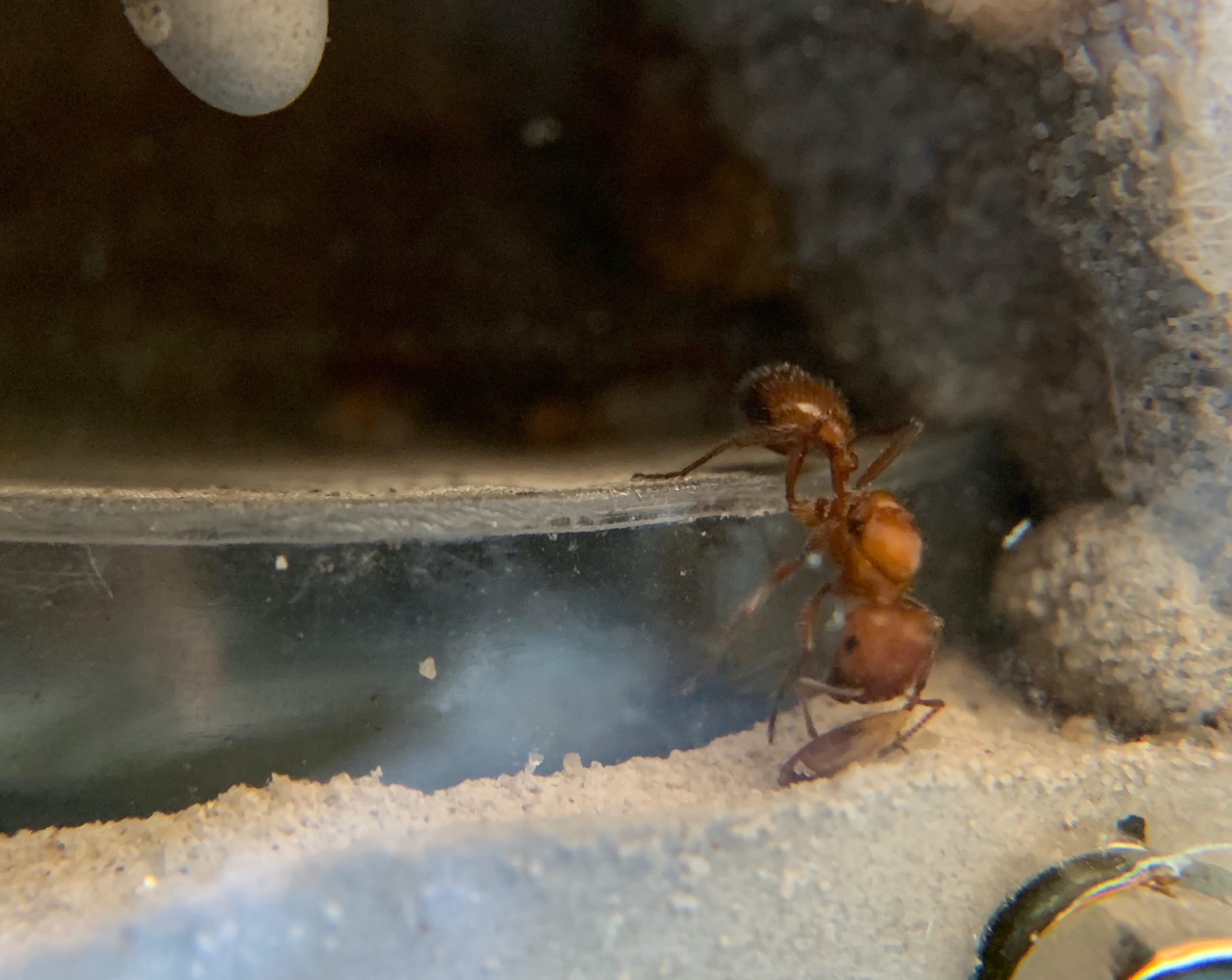








![Ants_Dakota's Pogonomyrmex occidentalis Journal[Discontinued] - last post by Ants_Dakota](https://www.formiculture.com/uploads/profile/photo-thumb-4828.jpg?_r=1723914036)





